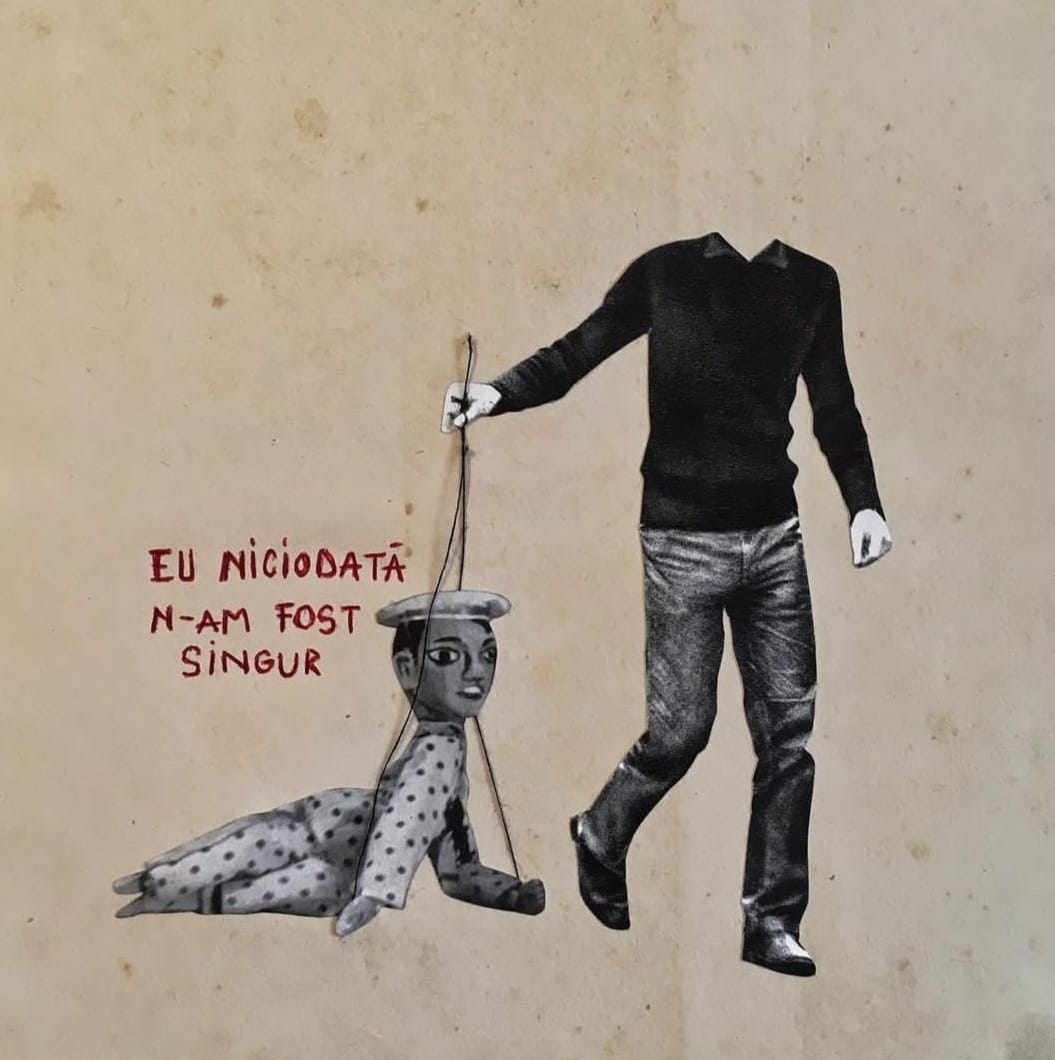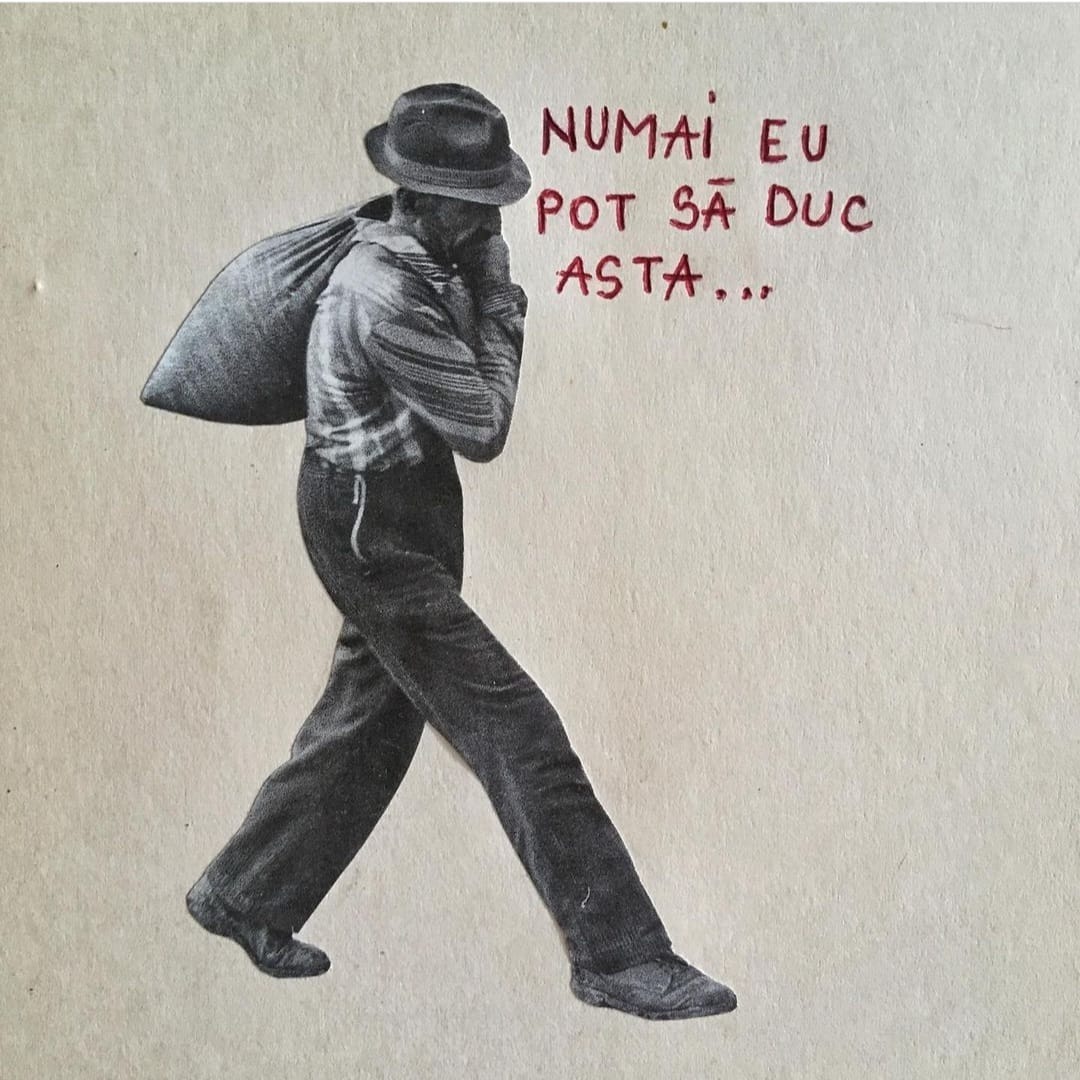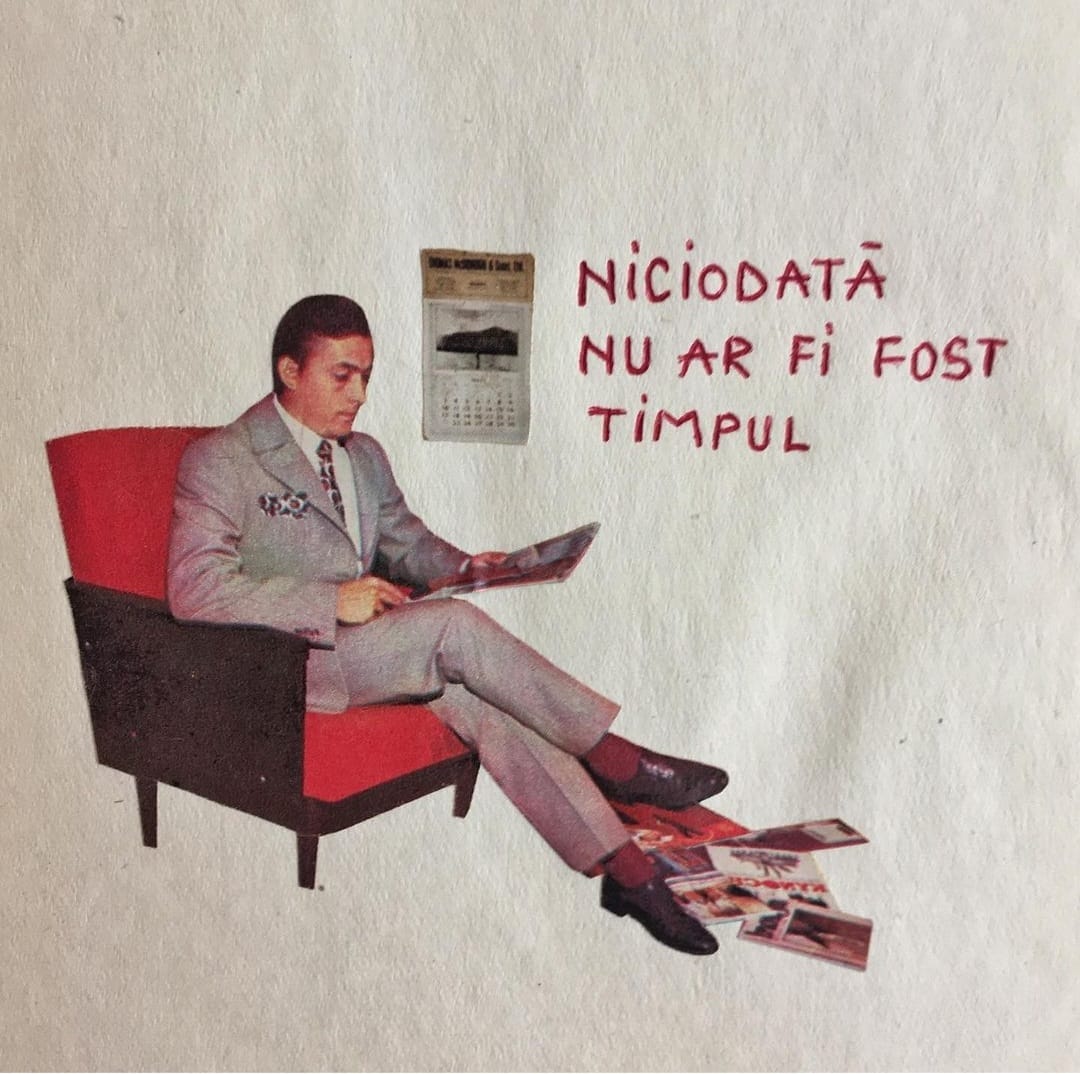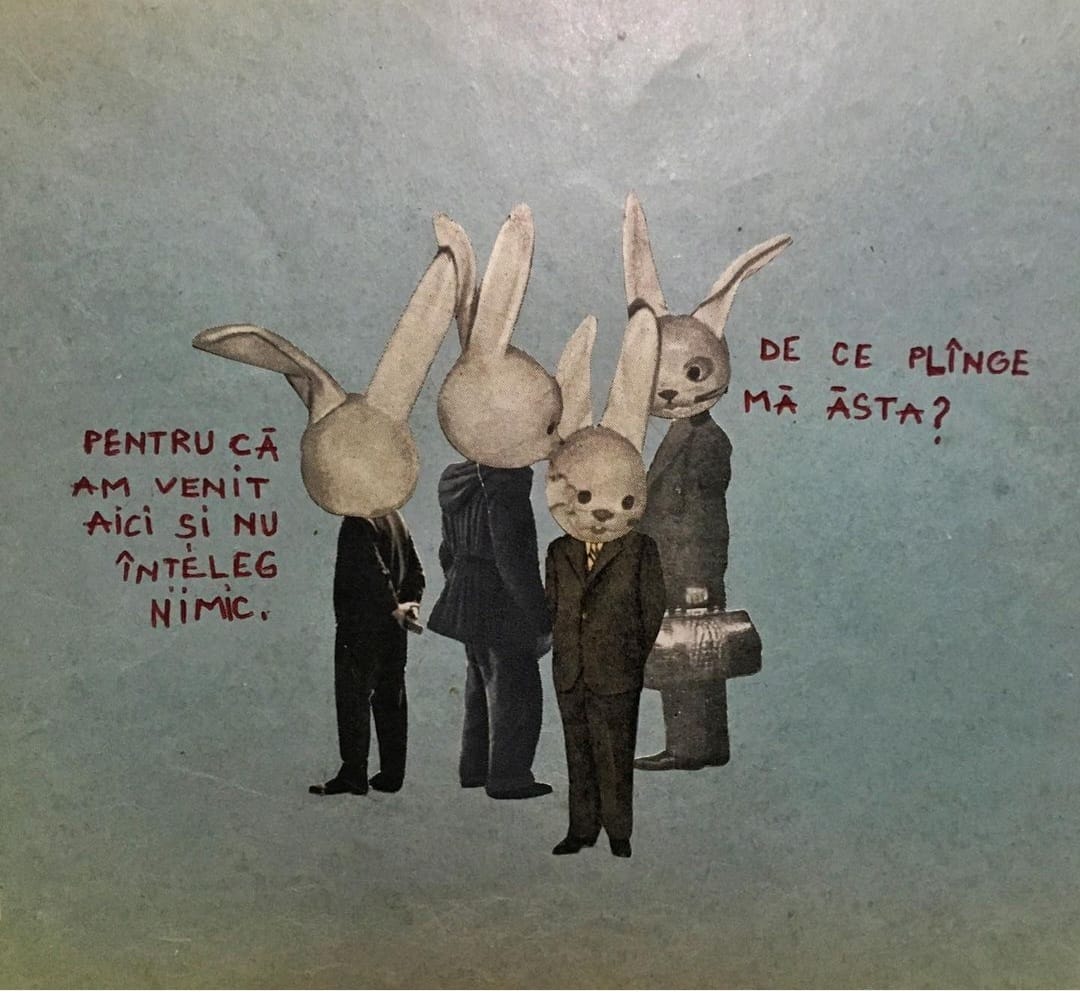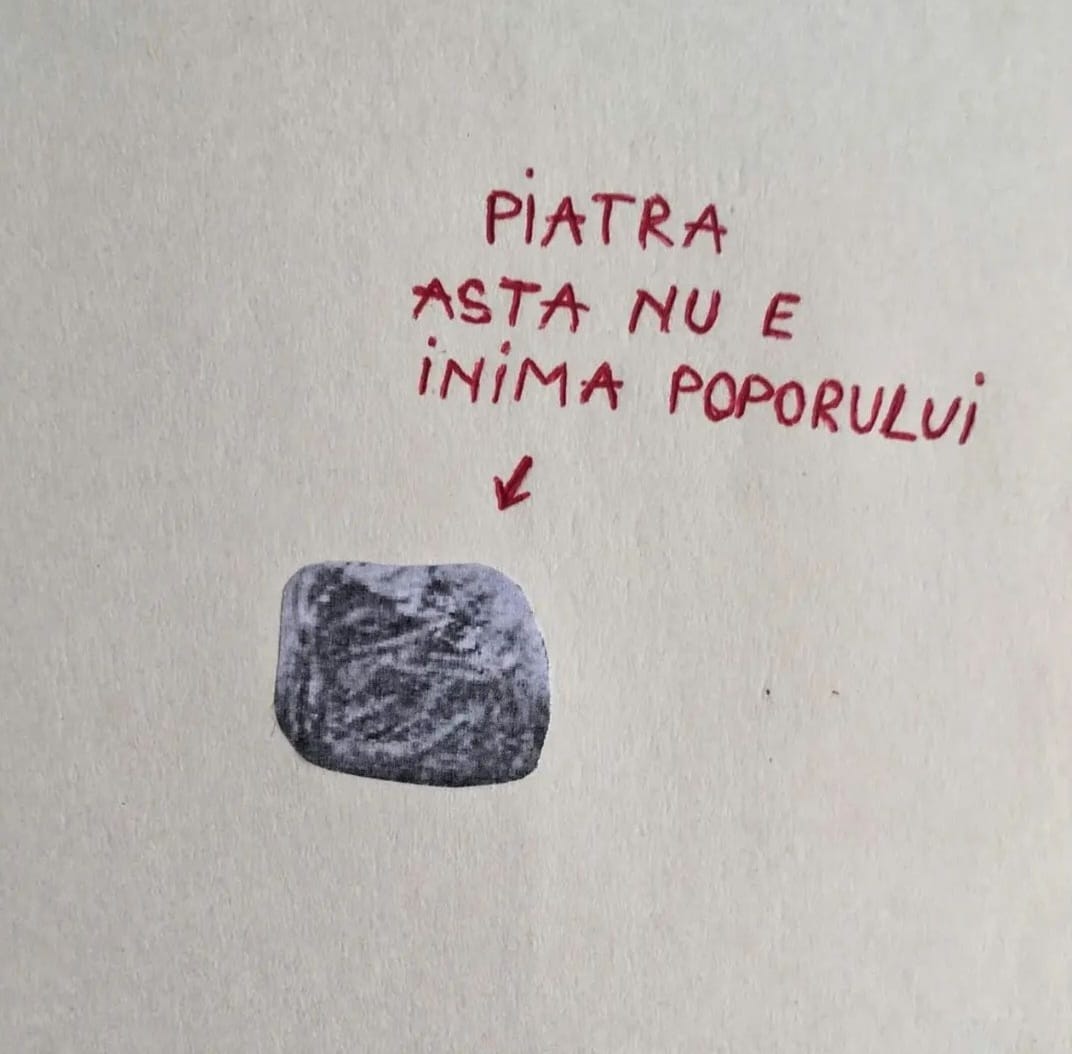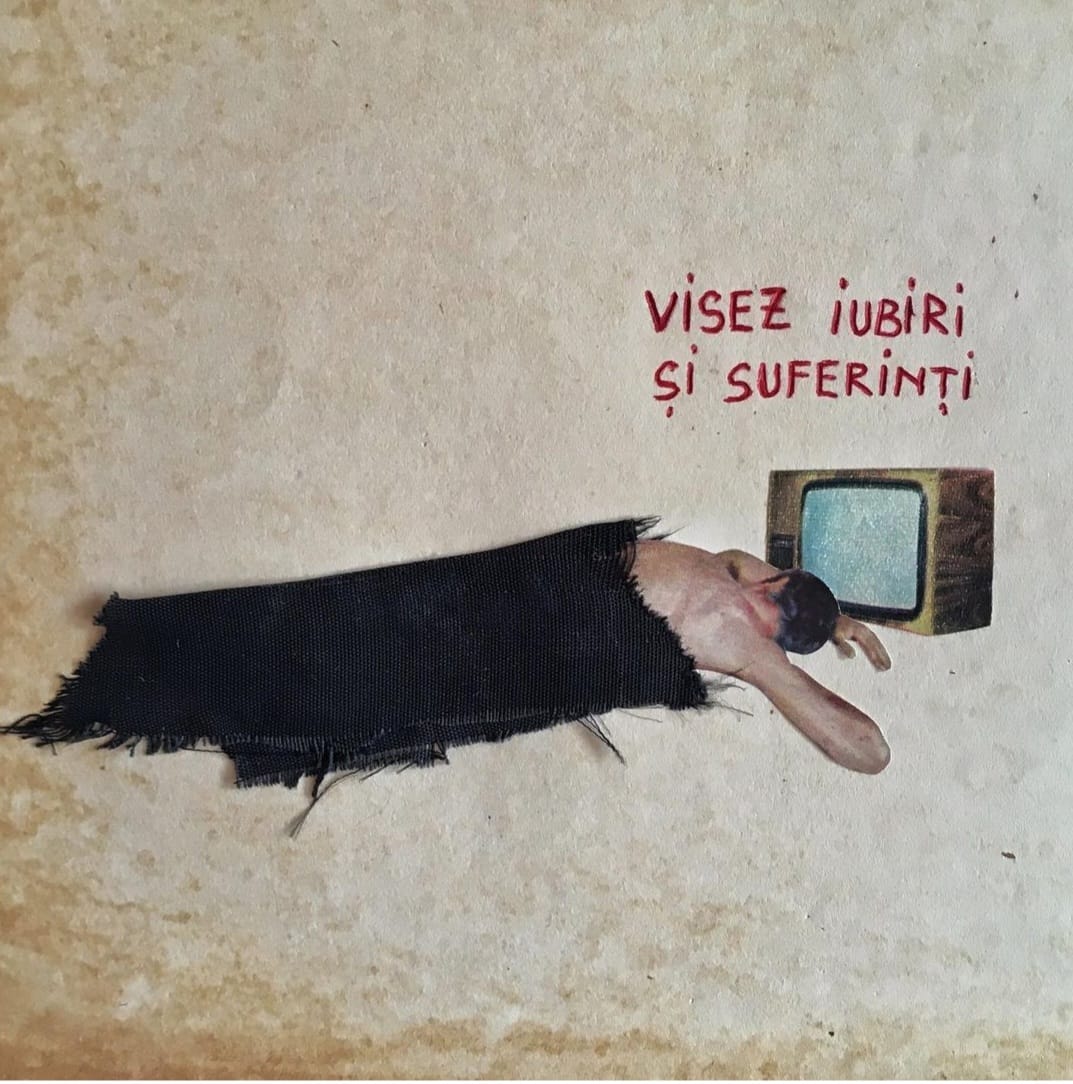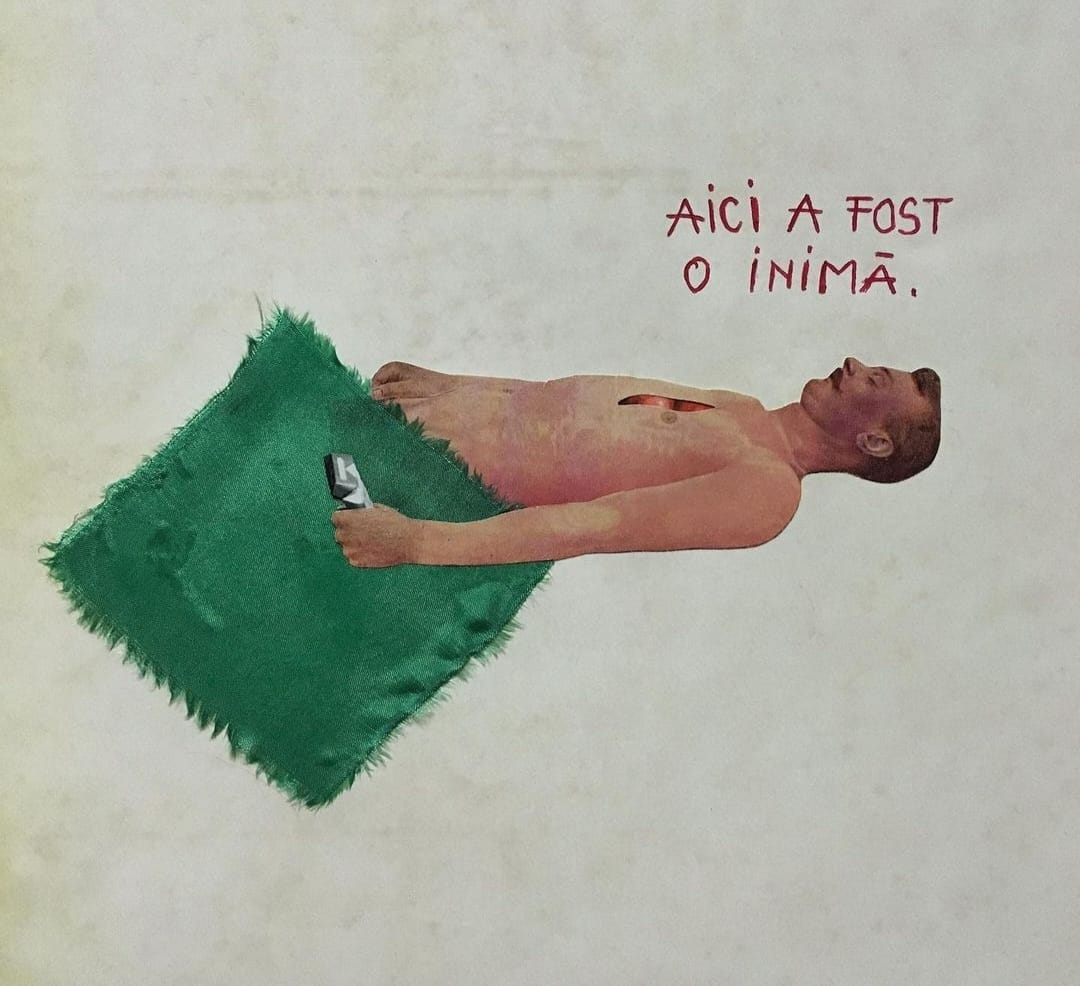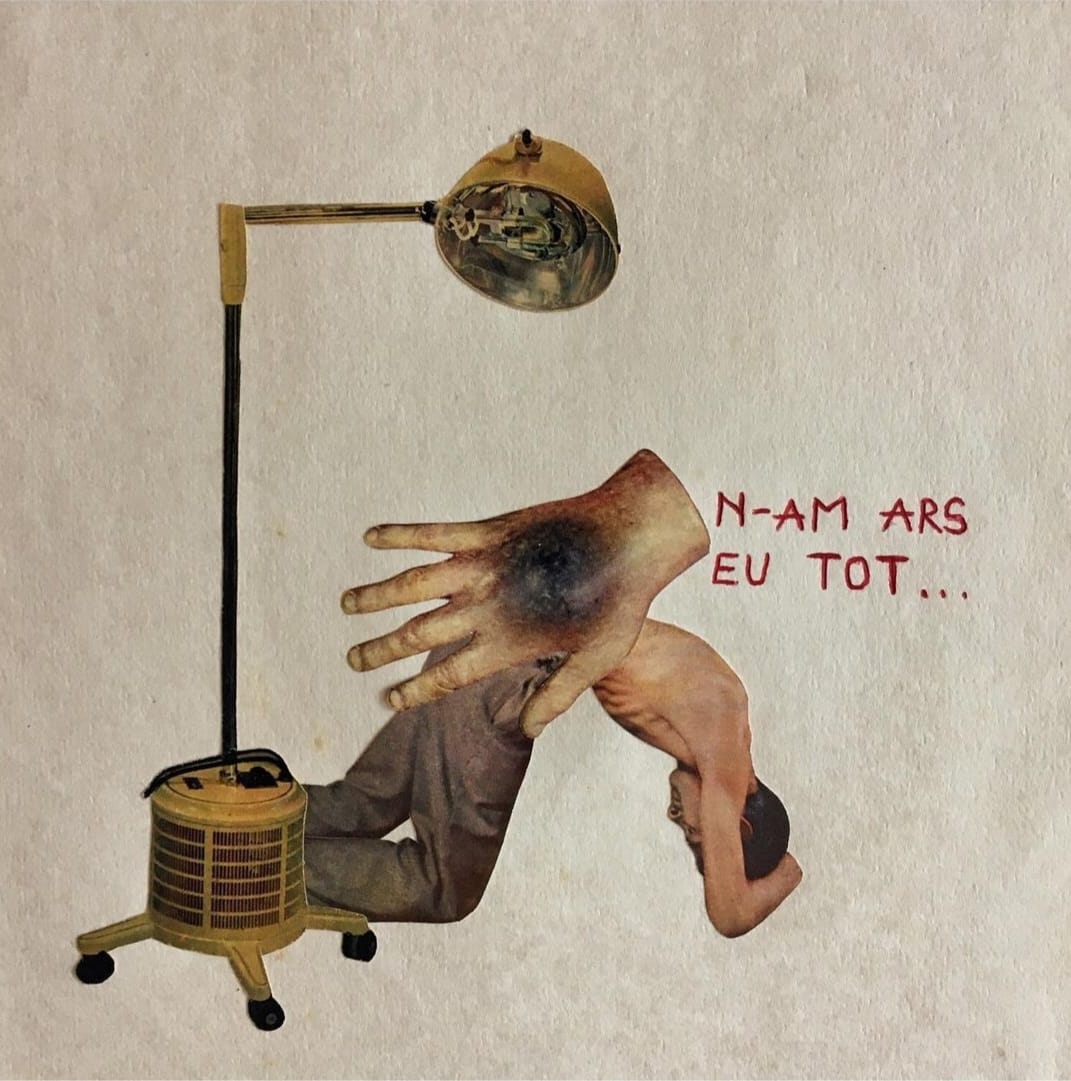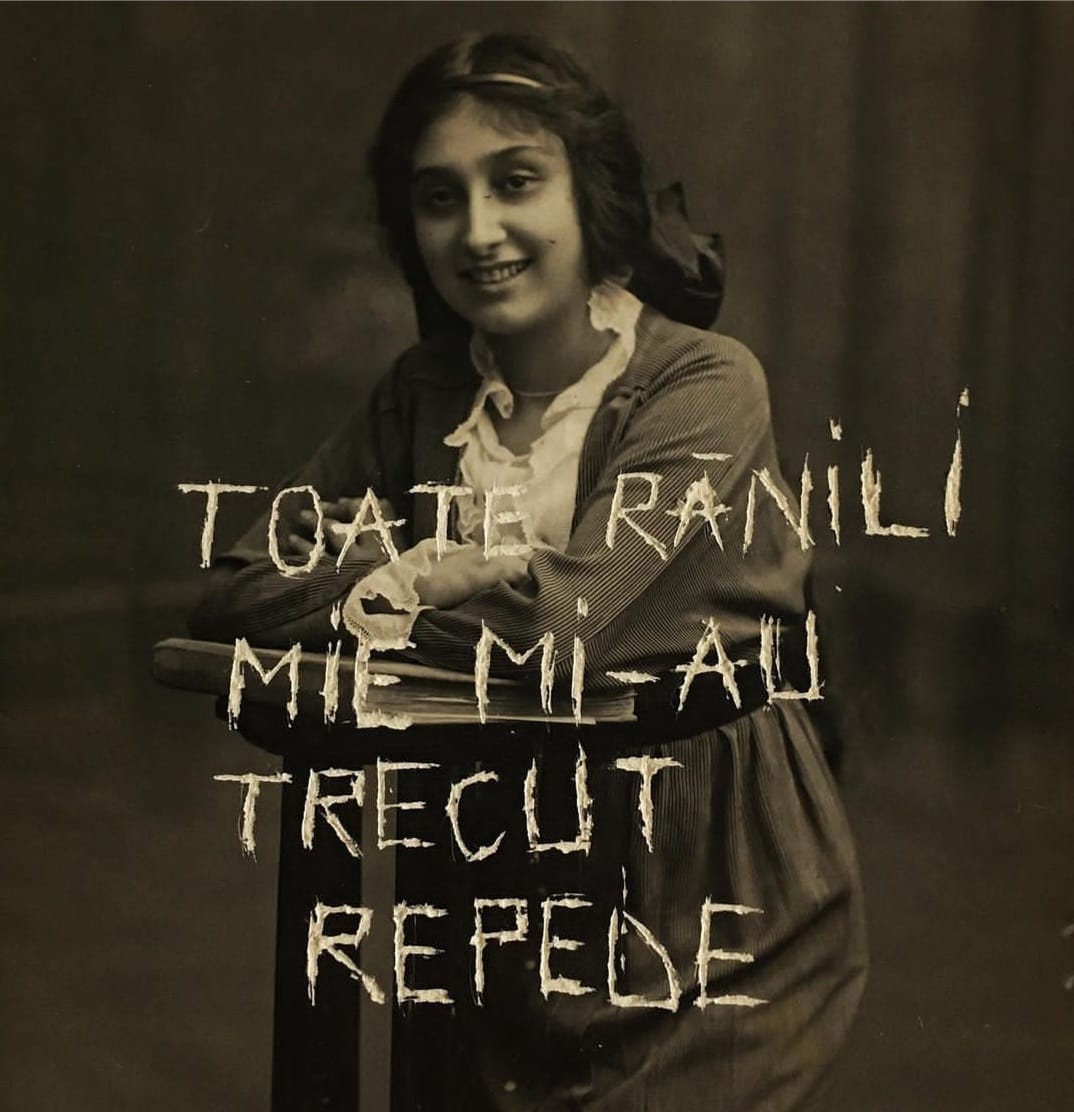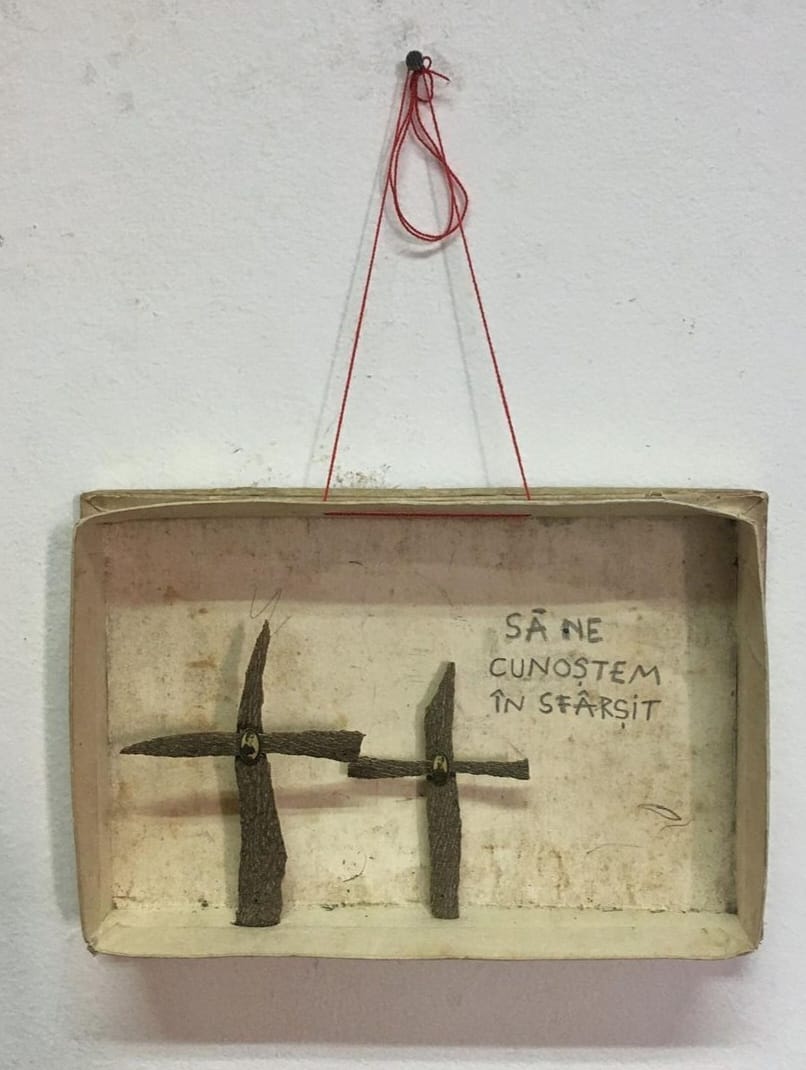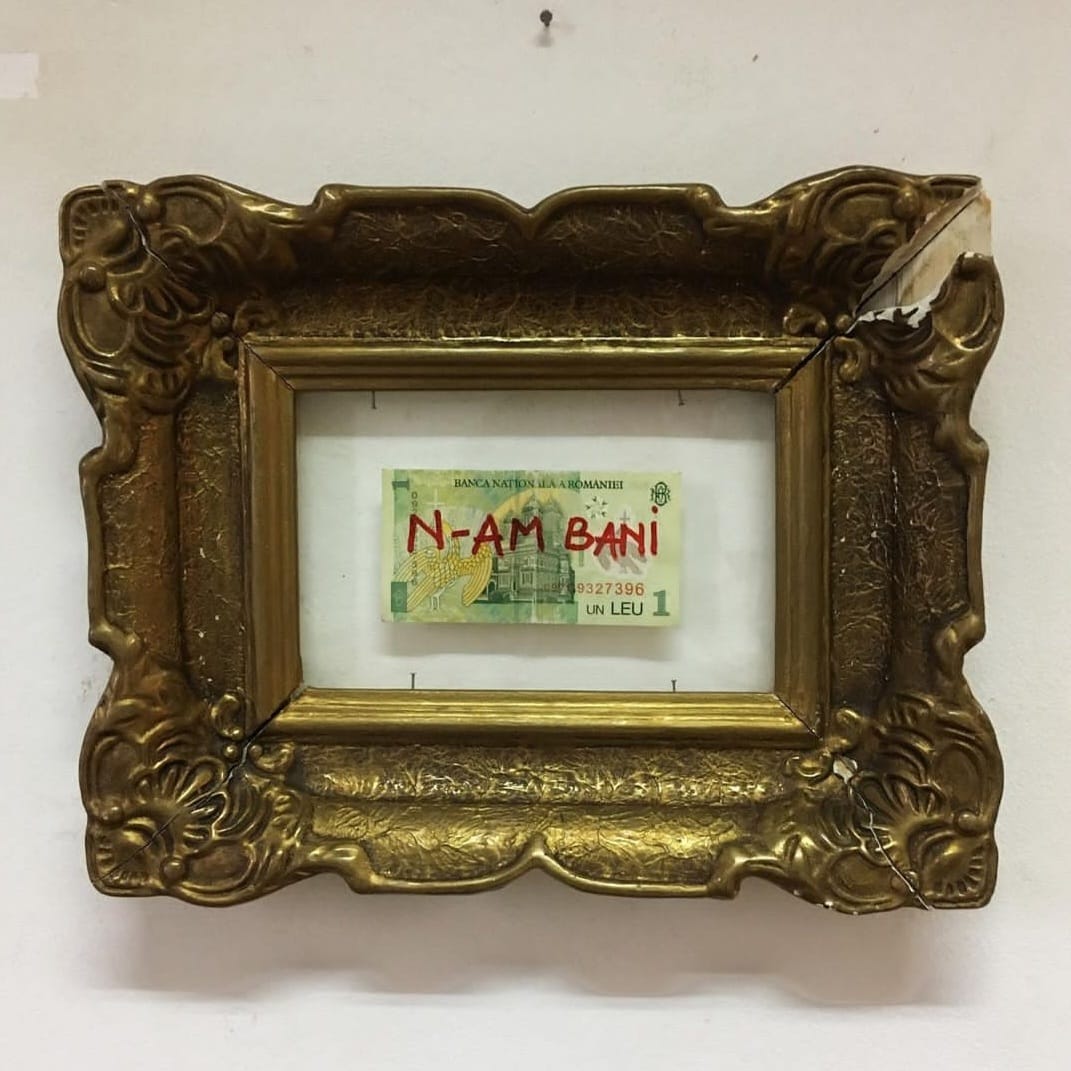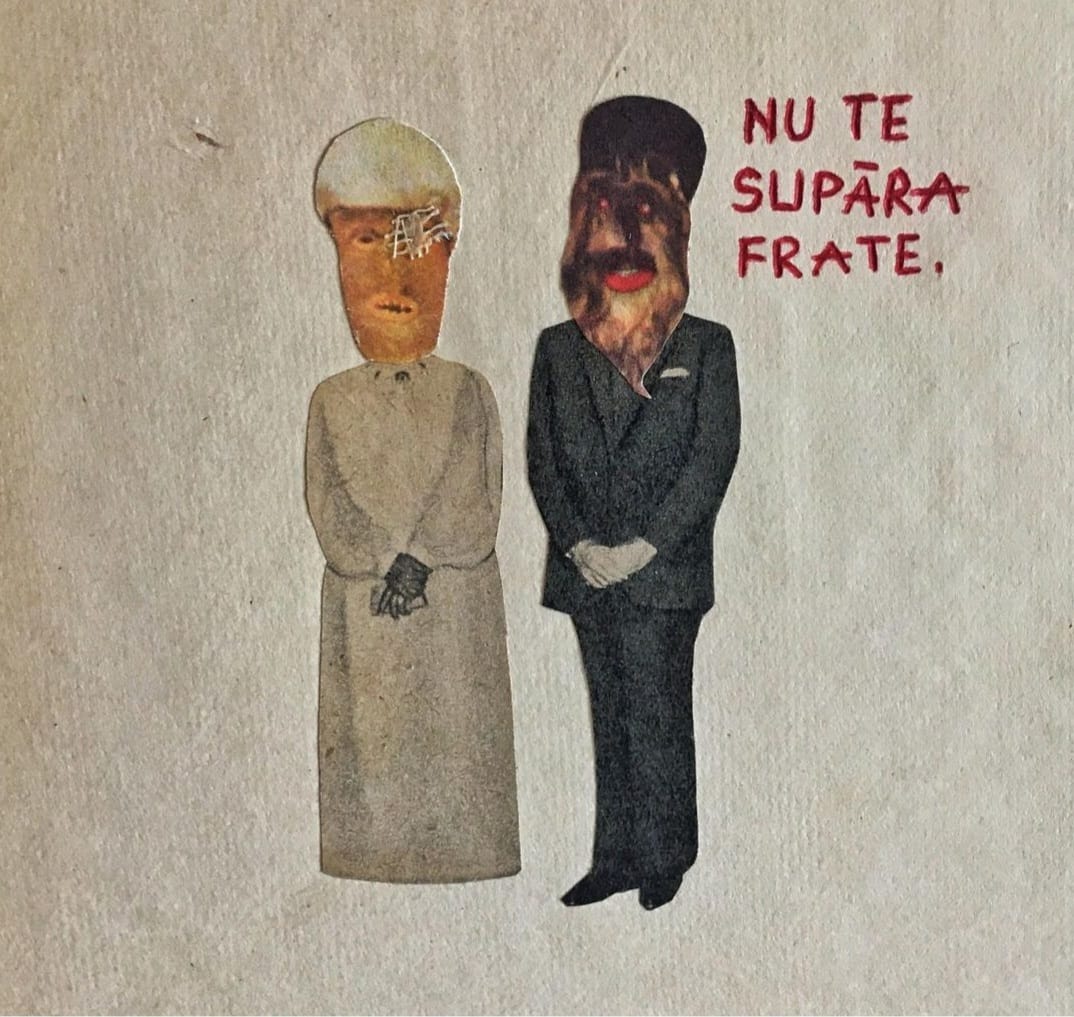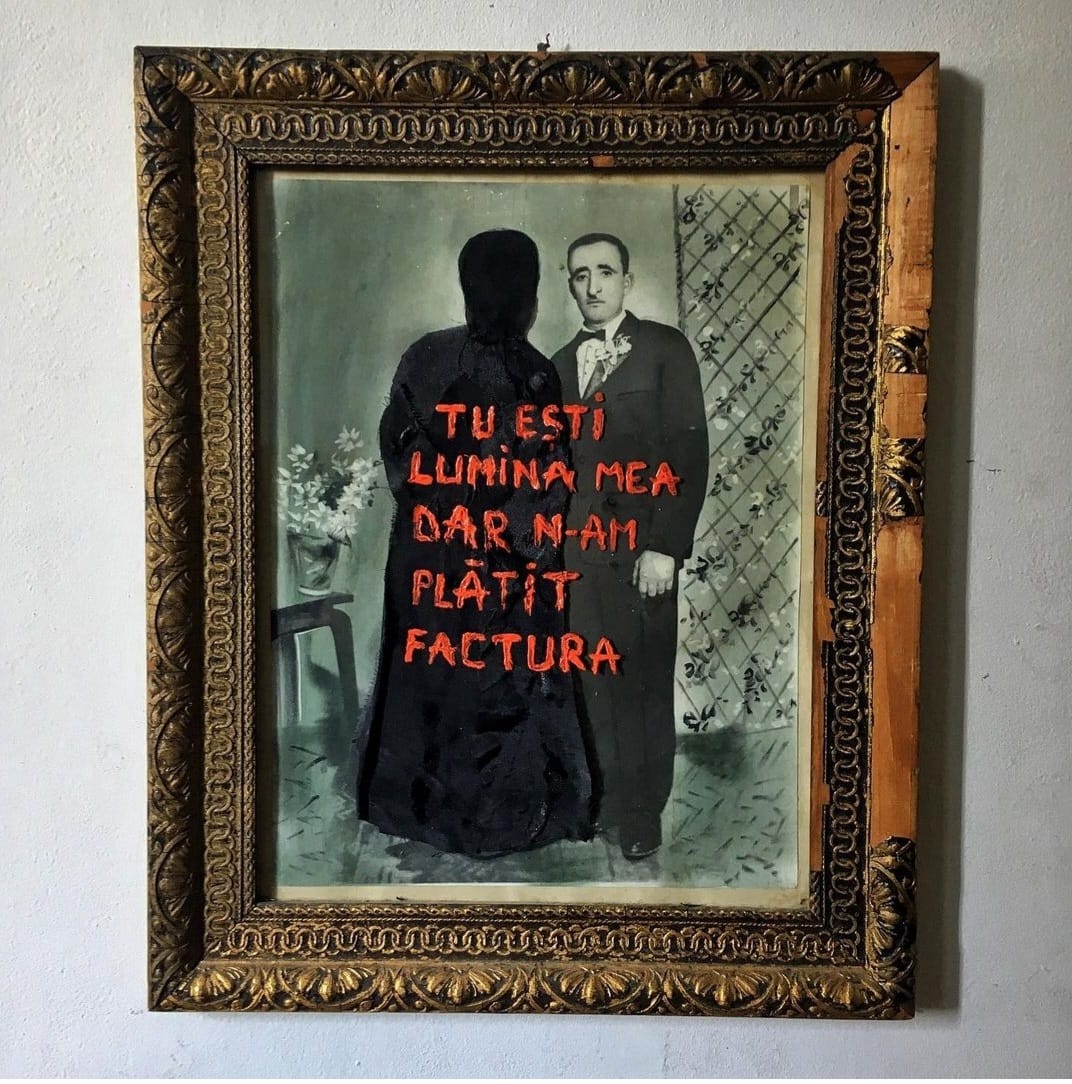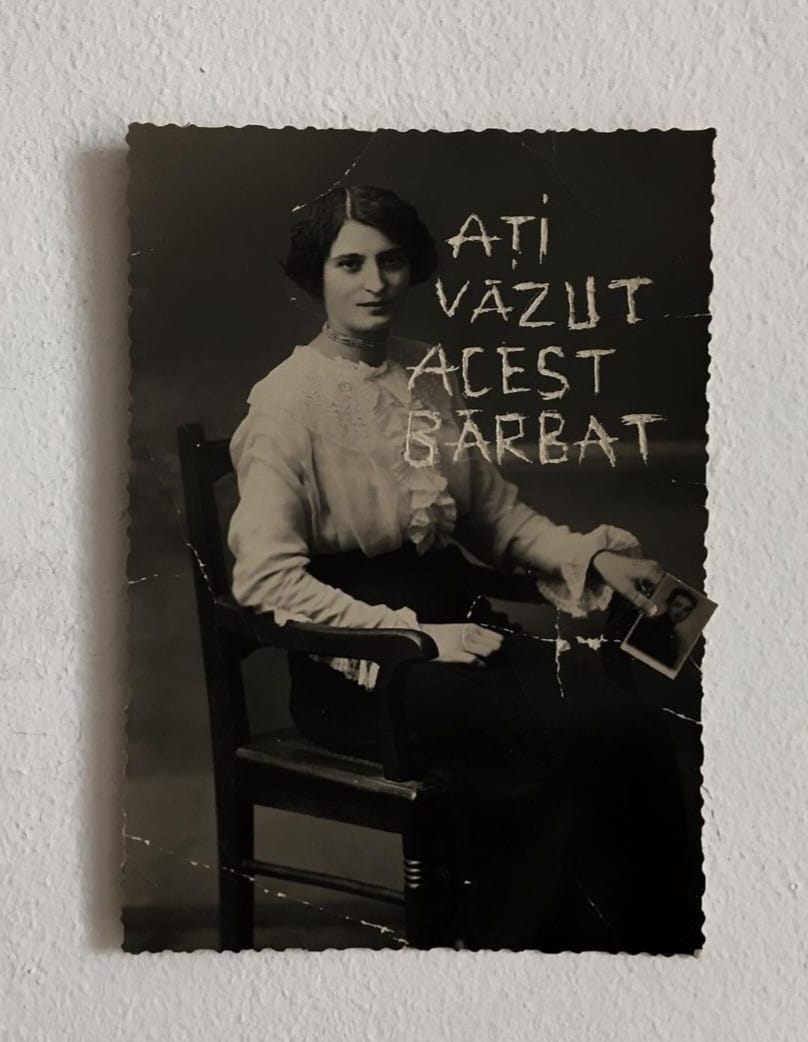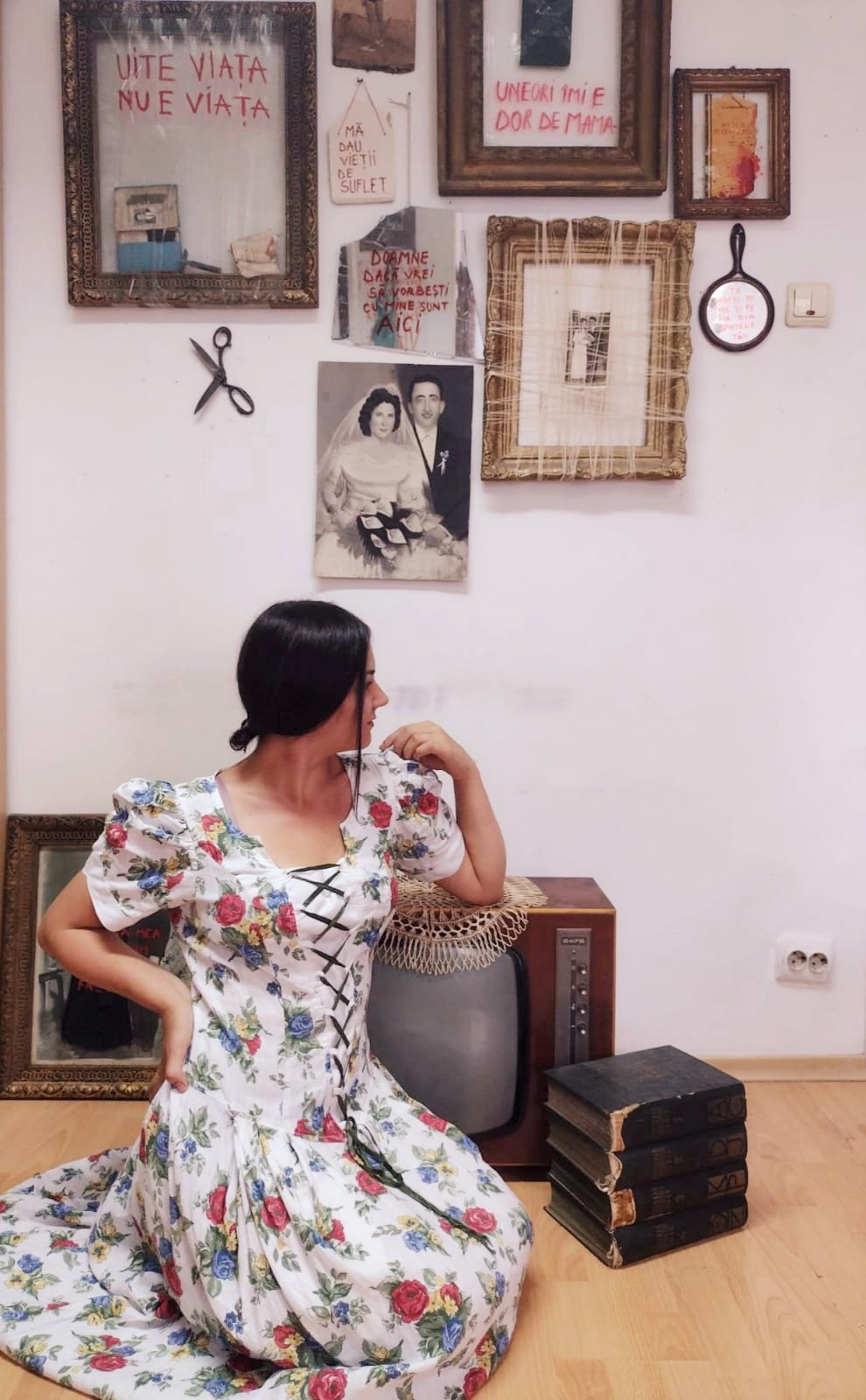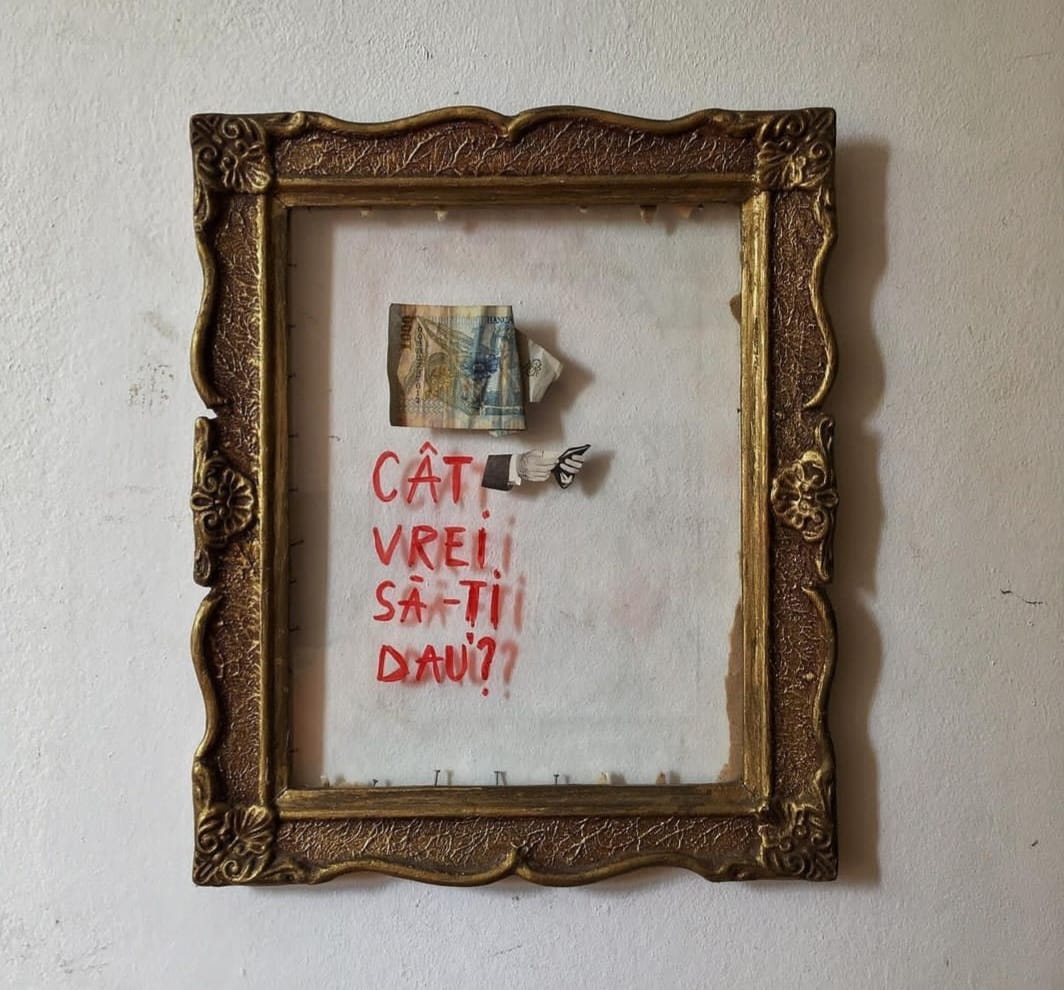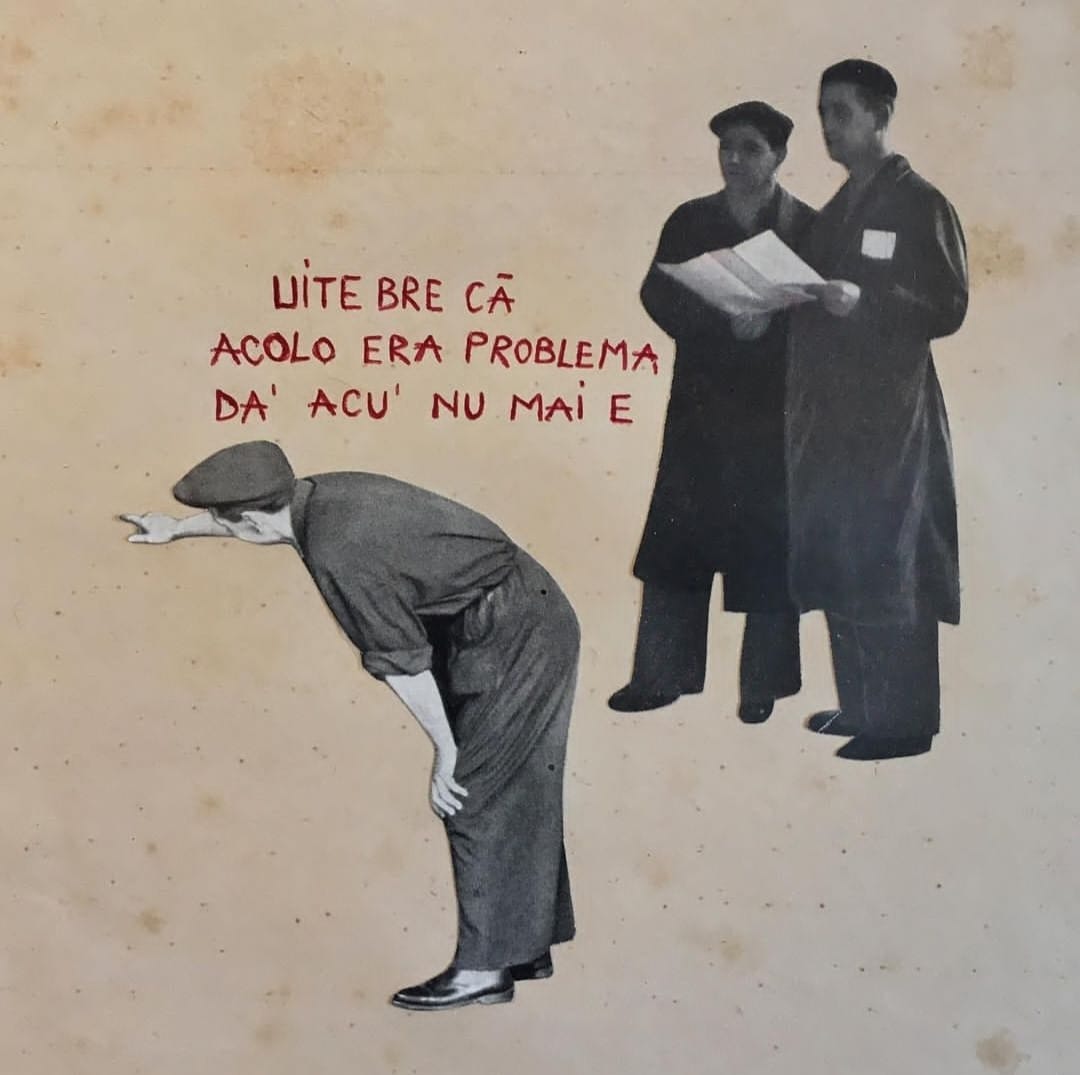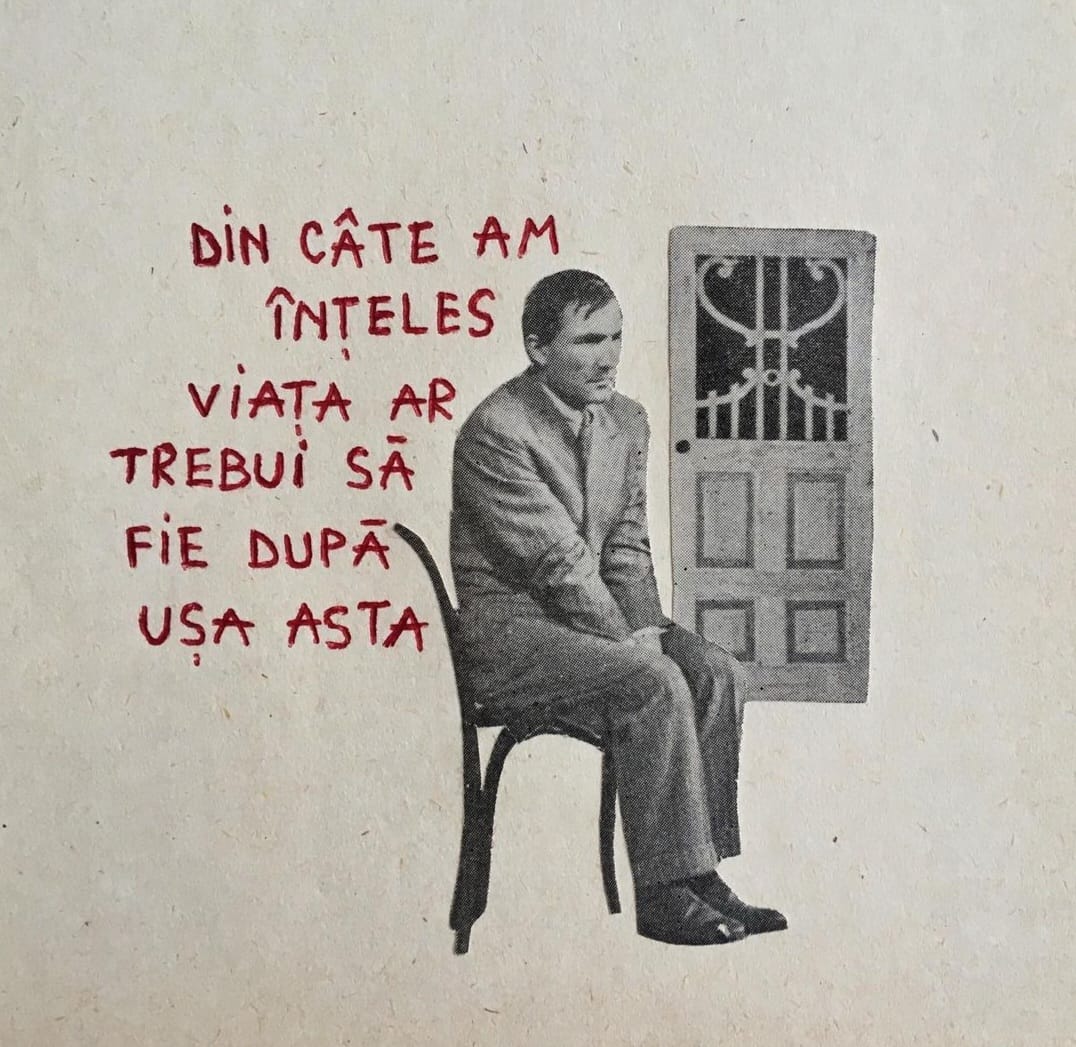Empower Artists spoke with Beatrice Arzoiu. Beatrice was born in 1999 in Târgovişte. She is a self-taught artist. During the pandemic, she started making collages that she presented on social media. In a short amount of time, she gattered a community of more than 27,000 followers who appreciates her art. The pieces contain her own life lessons, being more than a simple visual expression. She had a solo exhibition at Anticariat Unu, as well as in a house on Paris Street in Bucharest. She currently lives and works in Bucharest.
Which was the moment that marked the beginning of your creation?
I started making collages two years ago in a very spontaneous way, after I travelled to Târgoviște, the city where I went to high school. There I found a photo album with images of the museums in Târgoviște, which I tore appart and placed on a white paper. From then on, every day for several months, I practiced this art form continuously, until everything started to be like on autopilot, the combinations coming to me naturally. For a long time I did not glue the collages I was making, I was just exploring until I felt like I had created a personal style of expression.
How do you know when a piece is done?
I often feel that an artwork is ready before I even start it. With the tracks very well organized and a predefined text, things come around naturally. Recently, I have started to do a series of larger works, which can even take weeks to complete. I find myself looking at them and feeling that they do not inspire me yet what they should.
Not all the works have the same recipe: it takes me a long time to understand the meaning that each one of them has for myself. Only after I feel like this is clear to me can I complete the art piece.
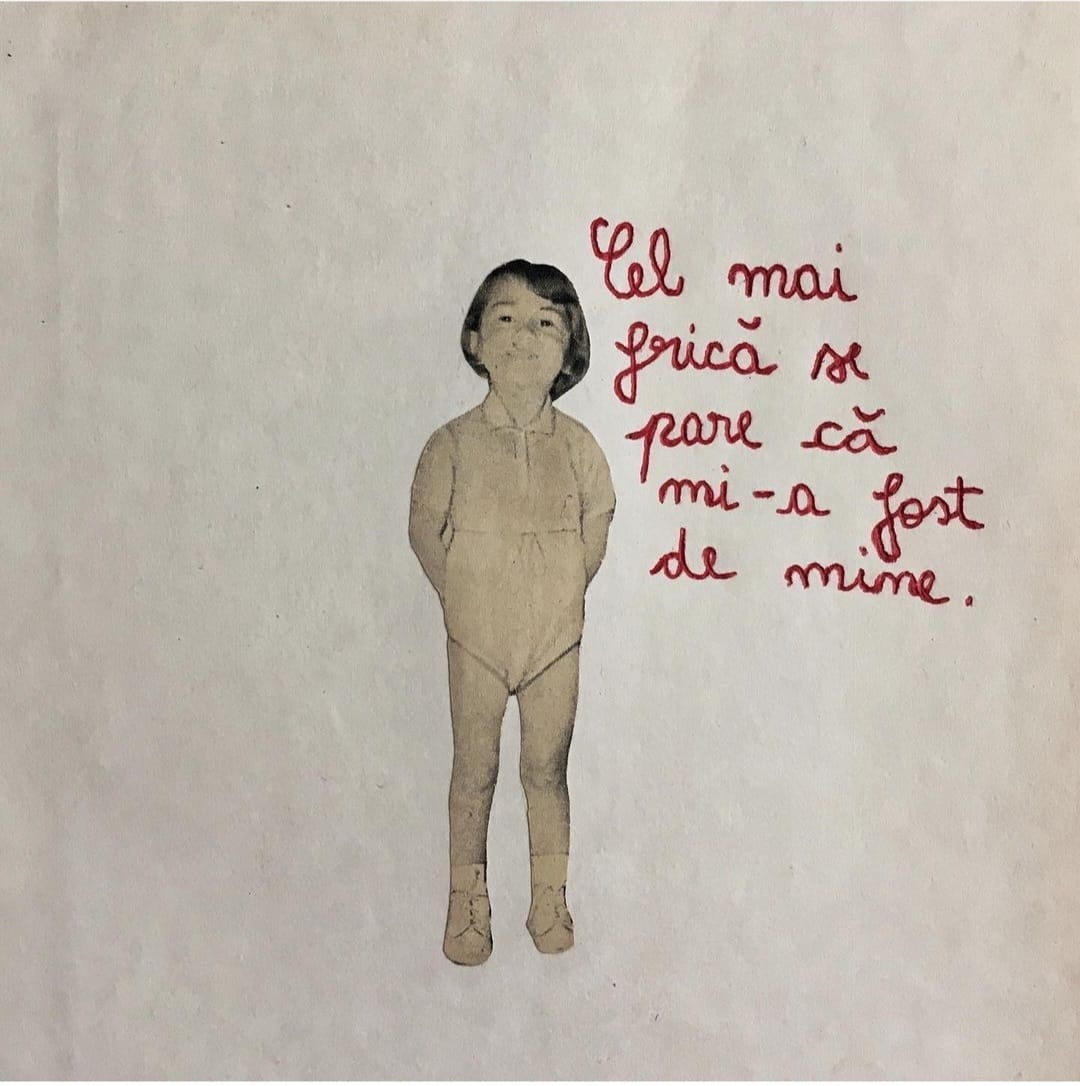
What do you focus on in your works? What topic do you frequently tackle?
For me, it often ends up with the image having more importance, but I feel like the text I incorporate into the work sometimes overshadows it. Through what I do I try to discover the world in a deep way, because it seems to me that I have not understood it quite enough yet.
The theme I like to approach is life, with all its “holes”. I like to capture details of my life, but also of all life. In the more recent works I try to figure out meanings, the world, the connections between people, but especially the notion of sin. Because of the wrong approach of religion, sin has become a concept treated superficially, not being understood in its essence. Sin is something real and it means doing something that does not bring any benefits to you nor to the whole world. I perceive it as anguish.
Which artist influences your creation?
When I was in the 7th grade, I met for the first time the novelist Carol Ardeleanu, when I read “A Dog’s Life”, his last work (which I finished in just two days). After reading that it was as if I entered a kind of trance, it marked me so strongly that I re-read it to this day.
Because of him I use “î” in many of my works where it would normally be written with “â”. Through this artifice I try to pay homage to his writings, as if I were speaking his language. Carol Ardeleanu was an interwar character, and his writings contain an older Romanian language, specific to that time.
Where do your ideas come from? What inspires you to create?
The mere thought that I have to create pushes me to do it. I consider it to be my job on Earth and therefore it must be done.
Regarding inspiration, for this I go out into the world, live some experiences, and then they begin to take on proportions in my mind.
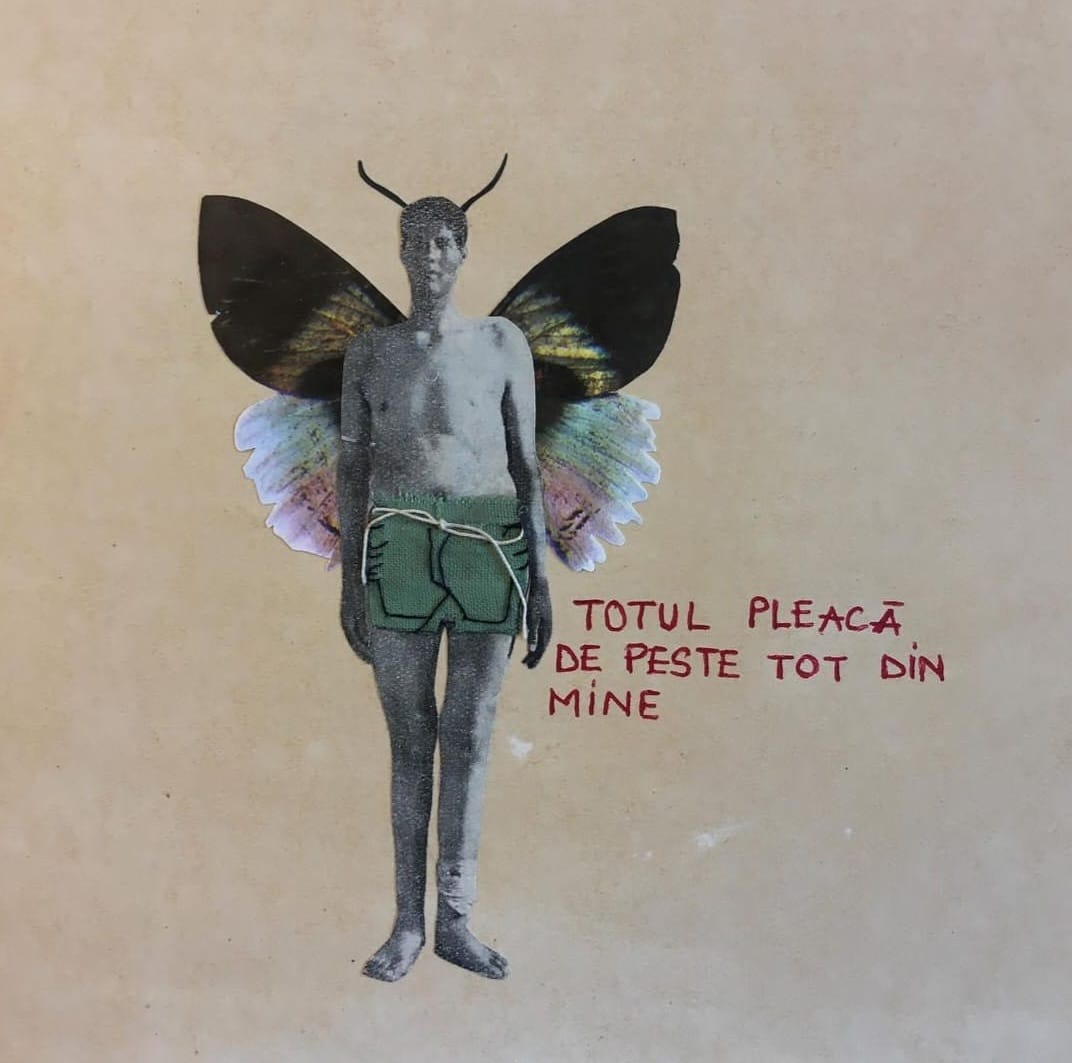
Do you need a certain state of mind to start creating?
Many times I end up thinking that I need a certain state, but I manage to surprise myself. I feel like I need a clear state of mind, but sometimes I can work even when I am going through horrible moods.
I used to think that the creative process was all about willpower, but there were times when this did not matter at all. I believe that I am programmed to create, and ultimately this activity does not belong to any state.
Which moment in your artistic career are you most proud of?
At one point I worked at an antique shop in the center of Bucharest. There, I had the chance to organize the showcase myself and put some of my works in it. In the end, I was able to make it look exactly as I had envisioned, and this accomplishment gave me a sense of complete peace. I think it was one of those moments where I felt that genuine delight with what I had accomplished.
Another moment of satisfaction I had was when I sold my first works and noticed that people were starting to recognize me for what I do. I feel real joy when I see that people want what I create, I cannot believe it sometimes.
What does your art mean to you?
It represents what I do the best. It is my occupation on Earth. Therefore, I put my whole soul into the works I do, I “unwind” completely.
It is something I respect: once I have finished a piece, I feel like it is no longer mine. It becomes a lesson that must be respected. When I look at a work and realize that I have not lived up to what I stated in it, I feel ashamed of it and of the words that are carried within it.

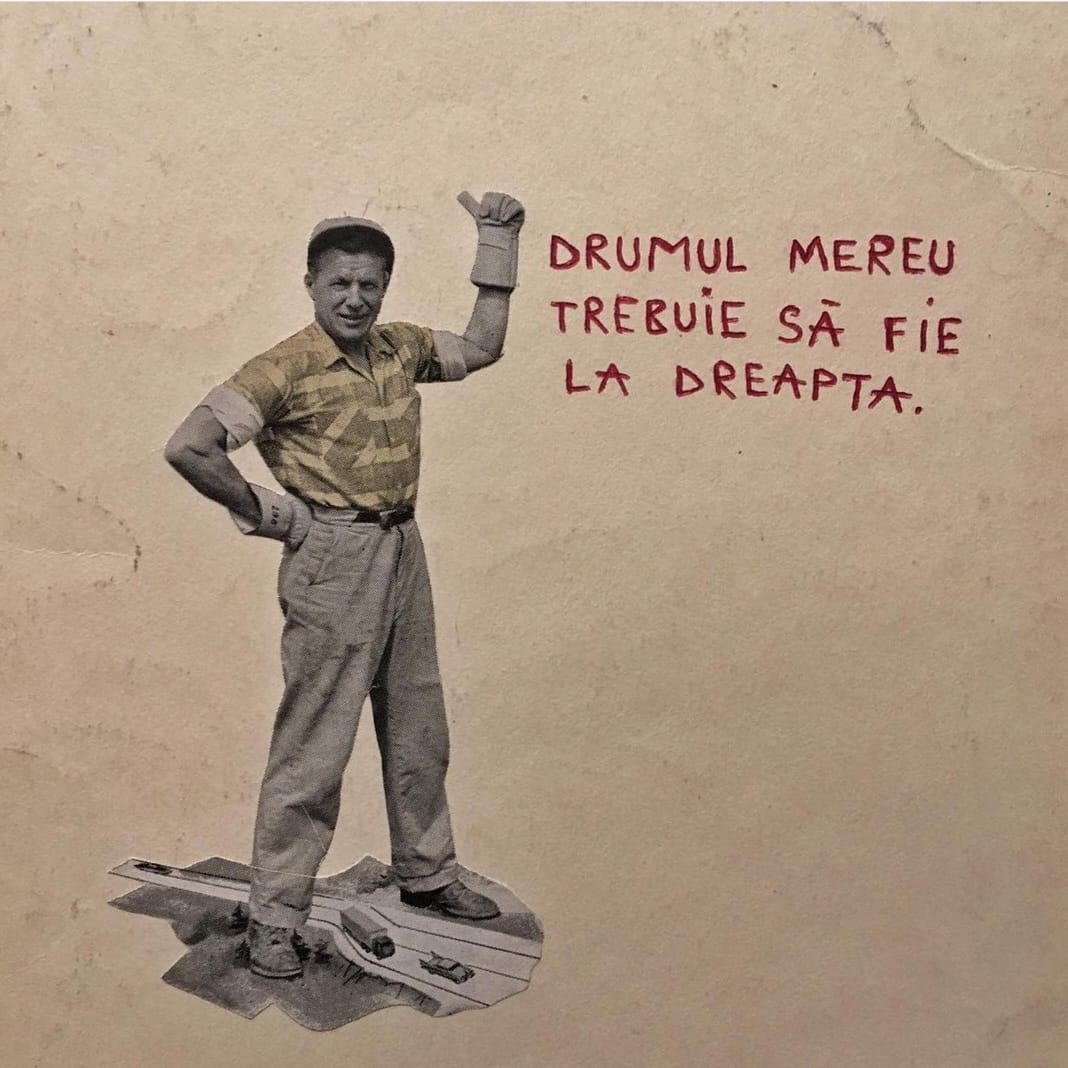
What plans do you have for the future?
I plan to take better care of myself. This fact will also be seen in my creations, because everything will be much more organized. I also want to make some social manifestos. I want to capture myself in them and to see if people will understand their essence. I would also like to assert myself on the international art scene with my new series of textless works. However, I do not want to settle outside of Romania. I like the energy in our country too much, especially the energy in the countryside. Romanian art also attracts me, as I feel like it has a special depth.
What do you think helped you the most in your artistic development?
The constancy of things and the fact that I assume a role in the world that I feel like I have to respect.
Matching things up also helped. I was made to work at an antique shop where I used to get my work materials. Everything went as it should and when it should.
